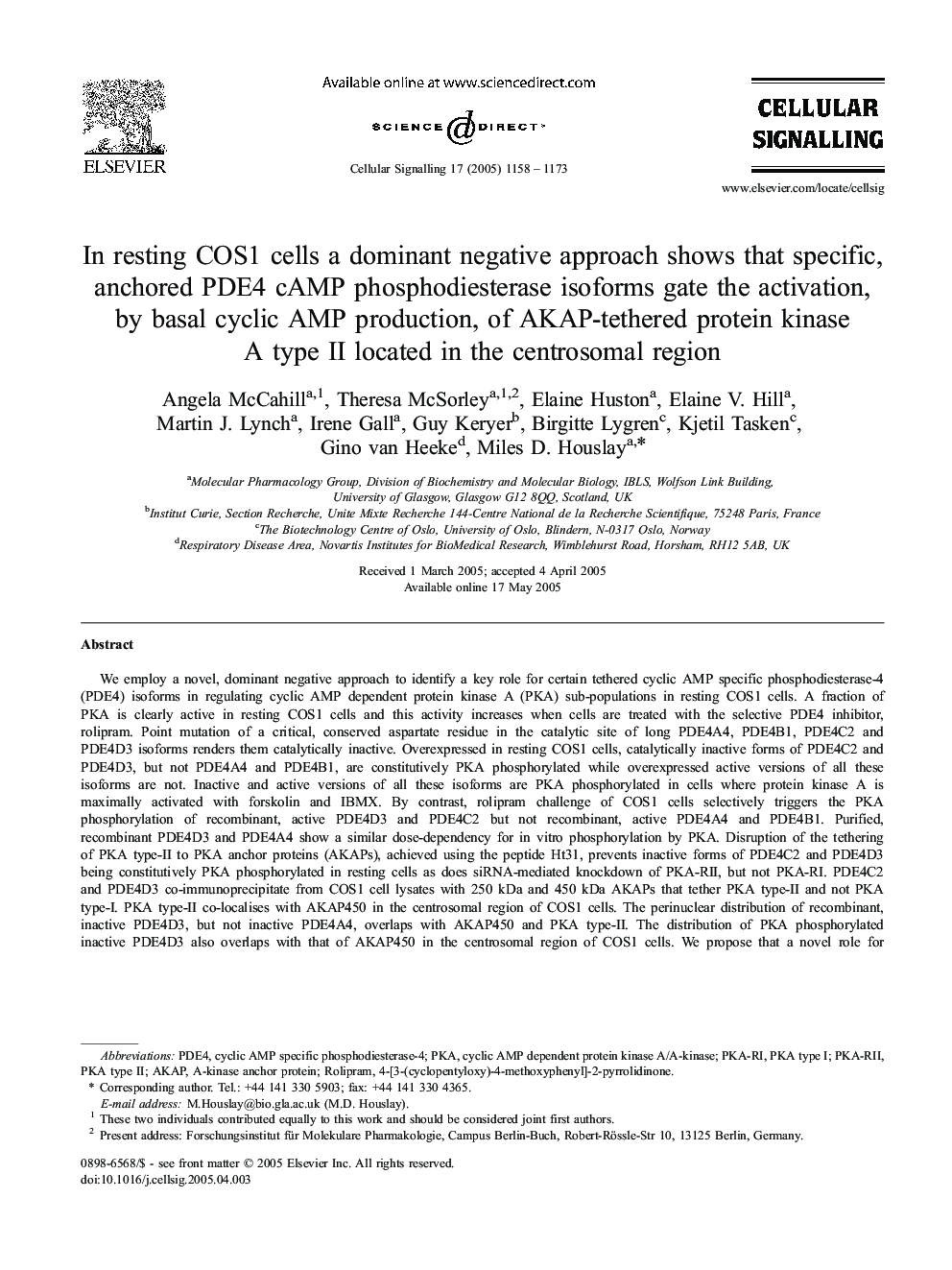| Article ID | Journal | Published Year | Pages | File Type |
|---|---|---|---|---|
| 10817088 | Cellular Signalling | 2005 | 16 Pages |
Abstract
We employ a novel, dominant negative approach to identify a key role for certain tethered cyclic AMP specific phosphodiesterase-4 (PDE4) isoforms in regulating cyclic AMP dependent protein kinase A (PKA) sub-populations in resting COS1 cells. A fraction of PKA is clearly active in resting COS1 cells and this activity increases when cells are treated with the selective PDE4 inhibitor, rolipram. Point mutation of a critical, conserved aspartate residue in the catalytic site of long PDE4A4, PDE4B1, PDE4C2 and PDE4D3 isoforms renders them catalytically inactive. Overexpressed in resting COS1 cells, catalytically inactive forms of PDE4C2 and PDE4D3, but not PDE4A4 and PDE4B1, are constitutively PKA phosphorylated while overexpressed active versions of all these isoforms are not. Inactive and active versions of all these isoforms are PKA phosphorylated in cells where protein kinase A is maximally activated with forskolin and IBMX. By contrast, rolipram challenge of COS1 cells selectively triggers the PKA phosphorylation of recombinant, active PDE4D3 and PDE4C2 but not recombinant, active PDE4A4 and PDE4B1. Purified, recombinant PDE4D3 and PDE4A4 show a similar dose-dependency for in vitro phosphorylation by PKA. Disruption of the tethering of PKA type-II to PKA anchor proteins (AKAPs), achieved using the peptide Ht31, prevents inactive forms of PDE4C2 and PDE4D3 being constitutively PKA phosphorylated in resting cells as does siRNA-mediated knockdown of PKA-RII, but not PKA-RI. PDE4C2 and PDE4D3 co-immunoprecipitate from COS1 cell lysates with 250 kDa and 450 kDa AKAPs that tether PKA type-II and not PKA type-I. PKA type-II co-localises with AKAP450 in the centrosomal region of COS1 cells. The perinuclear distribution of recombinant, inactive PDE4D3, but not inactive PDE4A4, overlaps with AKAP450 and PKA type-II. The distribution of PKA phosphorylated inactive PDE4D3 also overlaps with that of AKAP450 in the centrosomal region of COS1 cells. We propose that a novel role for PDE4D3 and PDE4C2 is to gate the activation of AKAP450-tethered PKA type-II localised in the perinuclear region under conditions of basal cAMP generation in resting cells.
Keywords
Related Topics
Life Sciences
Biochemistry, Genetics and Molecular Biology
Biochemistry
Authors
Angela McCahill, Theresa McSorley, Elaine Huston, Elaine V. Hill, Martin J. Lynch, Irene Gall, Guy Keryer, Birgitte Lygren, Kjetil Tasken, Gino van Heeke, Miles D. Houslay,
